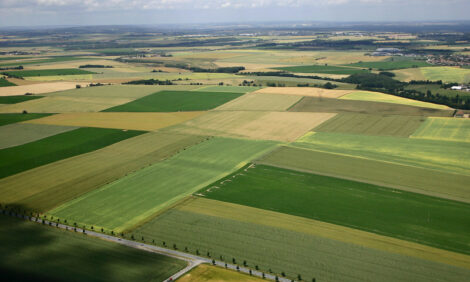



Technology Important for Beef Production, Efficiency
US - New research presented at the 2012 American Society of Animal Science meeting provided insight into the consequences if US farmers and ranchers no longer used productivity-enhancing technologies to raise beef cattle.If technologies were withdrawn, 17 million more acres of land and 138 billion more gallons of water would be required to produce the same total amount of beef. At the same time, 18 million extra metric tons of carbon dioxide equivalent (CO2eq) would be released in the United States alone and 16.9 million acres of forests would be destroyed in other countries. Overall, the US beef supply would decrease 17 per cent, stimulating more beef production in other countries.
“Global demand for safe, affordable beef has increased during the last 50 years, and US producers have responded by adopting innovative products and management practices that help them produce more lean beef,” says Jude Capper, Ph.D., adjunct professor at Washington State University and author of this peer-reviewed study. “If use of these scientifically proven, US Food and Drug Administration (FDA)-approved technologies were discontinued, our research shows the end result would be sobering: more cattle, more land and more water needed to produce the same amount of beef, and more CO2eq released into the atmosphere.”
Novel approach used to quantify the effects
The research looked at two US beef-production systems that were identical in all ways but one: whether or not productivity-enhancing technologies were used. The Conventional System analysed included FDA-approved ionophores, steroid implants, melengestrol acetate (MGA) and beta-adrenergic agonists used at current adoption rates. The No-Technology System did not use any of these products.
Dr Capper used a new whole-system environmental and natural resource model to determine the effects of using each system to produce the same amount of beef. This model included all inputs and outputs throughout beef production, from the manufacture of cropping inputs (fertilisers and pesticides) to the arrival of animals at the processor.
Dermot Hayes, Ph.D. economist at Iowa State University, then fed the results into the Center for Agricultural and Rural Development model — which includes a greenhouse-gas assessment — to understand the global agricultural-production and trade consequences.
“Our goal was to make this research as accurate and as real as possible,” says Dr Capper. “That’s why we turned to the best available resources, from the models used to prepare briefings for US trade representatives and Congressional leaders, to the newly developed whole-system environmental model.”
Results show a dramatic difference
Analysis showed that producing the same amount of US beef without using productivity-enhancing technologies would require these additional resources each and every year: 10 million more beef cattle, 17 million more acres of land for grazing and growing feed, 81 million more tons of cattle feed, and 138 billion more gallons of water. In the United States alone, 18 million more metric tons of CO2eq would be released into the atmosphere.
These effects would be equivalent to imposing an 8.2 per cent tax on US beef farmers and ranchers, causing domestic beef production to be reduced by 17 per cent.
If total global beef production stayed the same in this scenario, other countries would increase beef production. Within 15 years, Canada, Brazil, Argentina and Australia would increase beef exports by 36 per cent, 24 per cent, 11 per cent and five per cent, respectively. These four countries also would release 3.1 billion more metric tons of CO2eq.
“The biggest single impact would come from the destruction of 16.9 million acres of Amazon Rainforest and forests in the West Central Cerrado regions of Brazil,” says Dr Capper. “Losing the ability to use safe, approved technologies will create significant environmental and economic challenges that are undesirable and unnecessary.”
TheCattleSite News Desk


